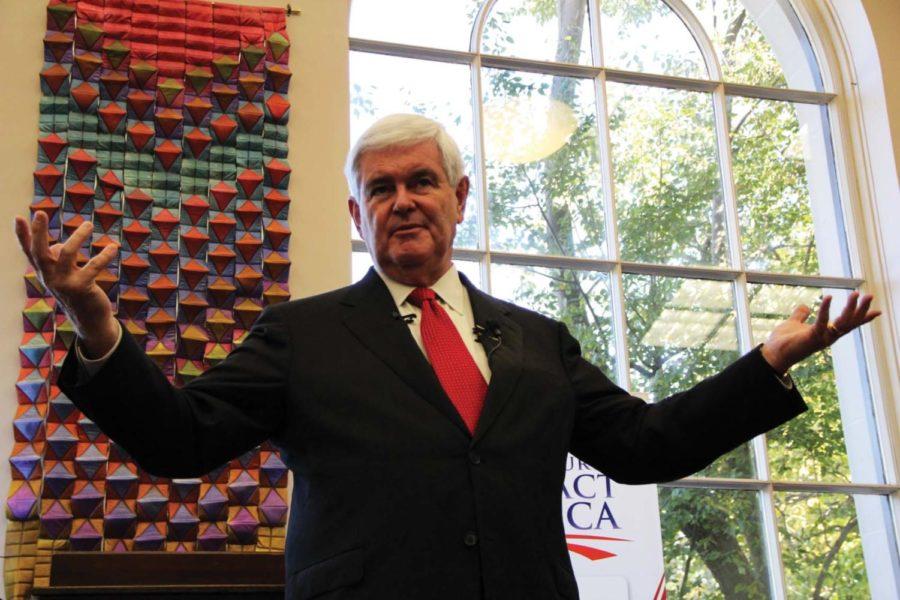Gingrich tops new poll in Iowa
Photo:Emily Harmon/Iowa State Daily
Newt Gingrich, 2012 presidential candidate, spoke at Iowa State on Friday, Sept. 30, in the Campanile Room of the Memorial Union, emphasizing Iowa State’s reputation for science and technology. Gingrich’s presence was part of the Presidential Caucus Series.
November 23, 2011
A new poll shows former House Speaker Newt Gingrich ahead of former Massachusetts Gov. Mitt Romney by seven percentage points in Iowa, a state that holds the nation’s first presidential contest.
According to a survey by the American Research Group, Gingrich tops the poll with 27 percent of support among likely Republican caucus goers, with Romney following behind at 20 percent.
While the margin falls within the sampling error, the poll reflects a significant bump for Gingrich, up from 8 percent since the survey was last conducted in September.
The poll, which was done before CNN’s Republican National Security Debate on Tuesday, reflects a steady rise in support for Gingrich in recent weeks, which he largely attributes to even debate performances.
Behind Gingrich and Romney, Texas Rep. Ron Paul took third with 16 percent, followed by Minnesota Rep. Michele Bachmann, former Pennsylvania Sen. Rick Santorum and Georgia businessman Herman Cain each with 6 percent. Texas Gov. Rick Perry came in with 5 percent and former Utah Gov. Jon Huntsman polled at 3 percent.
Also notable, Gingrich appears to have picked up a large portion of the tea party support in Iowa. Among likely GOP caucus-goers who identify with the grassroots movement, the former House Speaker led with 42 percent, up from 13 percent of tea party support in September. Texas Rep. Ron Paul followed behind at 19 percent.
The results in Iowa mirror a new CNN/ORC International Poll released Monday, which showed Gingrich at the top of the GOP field nationwide with 24 percent, with Romney in second at 20 percent.
The American Research Group interviewed 600 likely Republican caucus-goers in Iowa by telephone Nov. 17-23, with a sampling error of plus or minus four percentage points.







